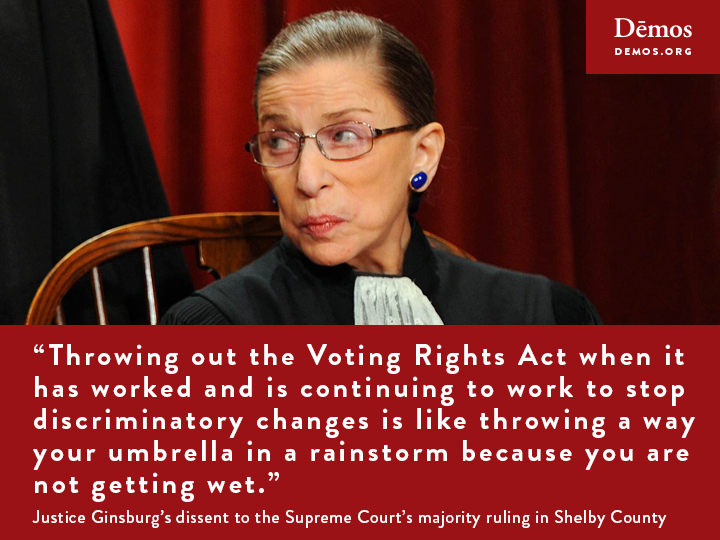1965 Voting Rights Act
The Voting Rights Act of 1965 offered African Americans a way to circumvent state and local barriers that prevented them from exercising their 15th Amendment right to vote. After the act was signed into law by LBJ, Congress amended it five more times to expand its scope and offer more protections. This law has been called one of the most effective pieces of civil rights legislation ever enacted by the Department of Justice. Its gutting by the Shelby County v. Holder decision in 2013 led to more restrictive voting laws in at least 7 states.
Sections 4(b) and 5 of the Voting Rights Act were by Shelby County decision. Section 4(b) contained a coverage formula that encompassed the most pervasively discriminatory jurisdictions and held them liable to special provisions within the Voting Rights Act. This ensured that previously-barred minorities within those jurisdictions would be protected and able to practice their right to vote. The coverage formula was always considered controversial because it singled out specific jurisdictions, most of which were in the Deep South. In Shelby County, the Supreme Court declared the coverage formula unconstitutional because it used outdated criteria and thus violated principles of equal state sovereignty and federalism. Other special provisions that were dependent on the coverage formula, such as the Section 5 pre-clearance requirement remained valid law, but without a valid coverage formula these provisions became unenforceable. The pre-clearance requirement meant jurisdictions that fell under 4(b) had to get federal approval for any changes they attempted to make in their election laws. With the removal of this requirement, states with a history of discriminatory behavior could now make changes without federal approval.
Notable Supreme Court Cases:
- Shelby County v. Holder, 570 U.S. ___ (2013) - in this case, the Court held that section 4(b) of the Voting Rights Act of 1965 was unconstitutional because the formula used to determine coverage was based on data that was 40 years old, and no longer representative of current needs. This caused a ripple effect among several states, such as Alabama, Arizona, North Carolina, Ohio, Texas, and Wisconsin, all of whom have passed more restrictive voter ID laws that removed online voter registration, early voting, same-day registration, and pre-registration for teens about to turn 18.
Selected Library Resources:
- Charles S. Bullock III, et al., The Rise and Fall of the Voting Rights Act, KF4891 .B85 2016
- Gary May, Bending Toward Justice: The Voting Rights Act and the Transformation of American Democracy, KF4893 .M39 2013
- Dara N. Byrne, ed., The Unfinished Agenda of the Selma-Montgomery Voting Rights March, F334. S4 U54 2005
- Ari Berman, Give Us the Ballot: The Modern Struggle for Voting Rights in America, JK1846 .B47 2015